Bonjour! As regular readers of Living Elsewhere may know, I have just returned from a few days in Paris, a city where I lived many years ago and have visited regularly since then. But it had been a few years since my previous visit, so my antennae were up as I moved about the city, sensing things that had changed or that I had previously missed.
What follows is a photo essay of ten aspects of life in Paris that caught my attention on this visit. As a list, it is thus both personal and a bit random. I won’t talk about the food, the wine, the museums, or the architecture, as those things are already well known to me, and probably to you too. I could certainly have included the post-Olympics prices, but those don’t make for a very good photo essay, so I have omitted them.
(If you are reading this essay in your email, I highly recommend going into your browser to read it, since you will then be able to see all the pictures, rather than just thumbnails of them. To do that, simply click on the title of this piece above.)
Let’s start our walk about town and see what we find, d’accord? Allons-y!
The civic status of water
The Parisians are quite proud of the high quality of their tap water, though I find it ever so slightly salty to the taste. Or perhaps it’s some other mineral, but it definitely has a particular flavor. The wonderful thing is that you can sample it all over the city, even while on the street. Paris is full not only of decorative fountains but also of drinking fountains, some of which have been in service for over a hundred years. In some cases, they even offer soap! Now that is a city that knows how to take care of its population.
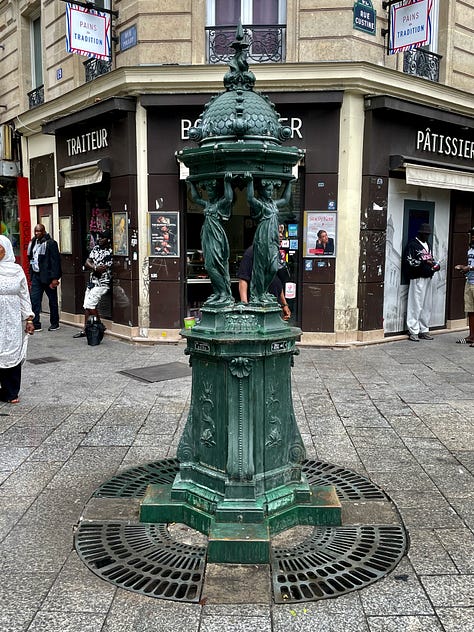
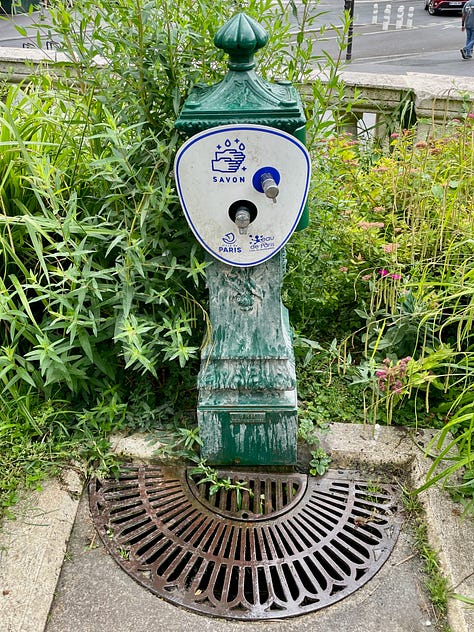

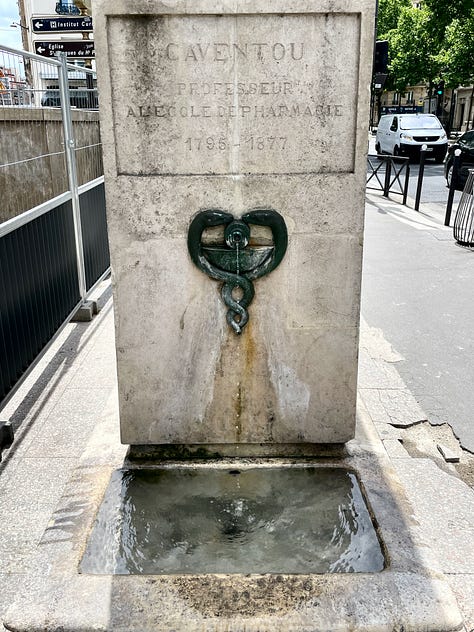


The importance of city parks
Speaking of taking care of the population, Paris is generously strewn with beautiful and well-tended parks, both large and small. And more so than in Lisbon, where I live, these parks are heavily used by the locals. At virtually any hour, you can find people both old and young taking advantage of the parks to sit or lie in the sun, hang out with friends, go on dates, play with children, eat, or participate in my favorite activity, which is the next topic…

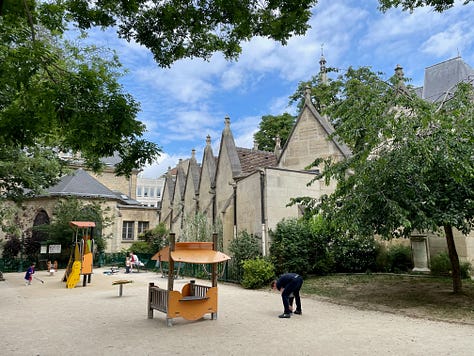
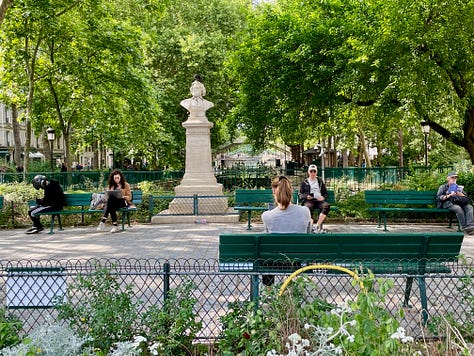

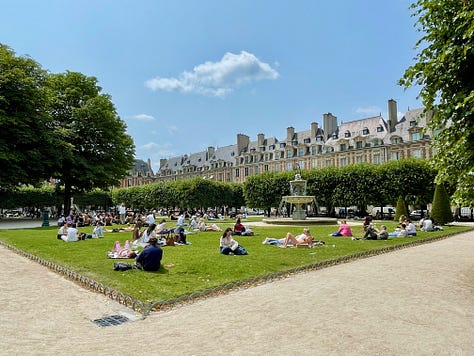
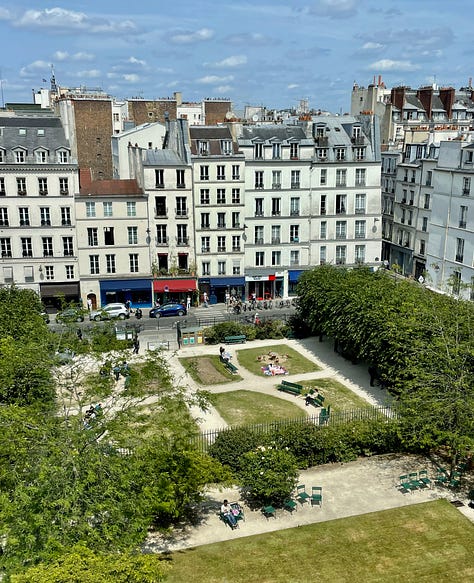
People reading books in public
I was gobsmacked on this visit to see that Parisians are still in the habit of reading actual books (made of paper!) in public. I can’t express how happy it made me to stroll through the parks and along the canals—even the cemetery!—and see people sitting and reading. Note that this includes people of nearly all ages. The individuals I saw on their phones tended to be either quite young or American.

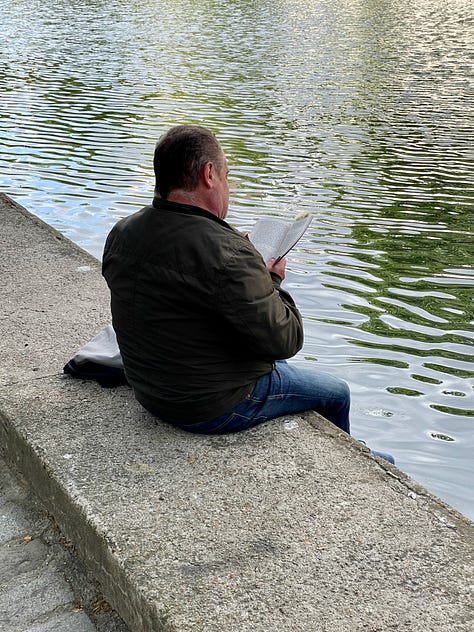
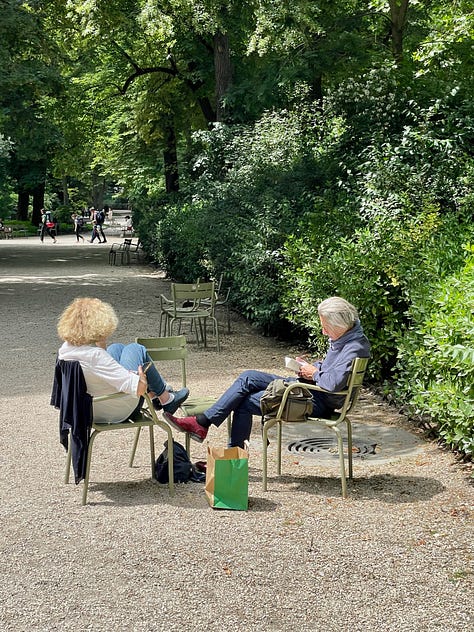
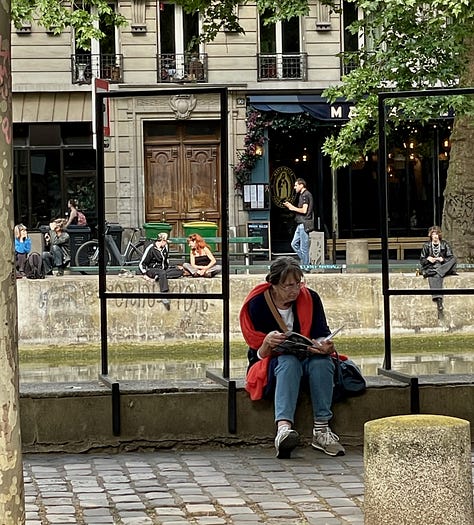
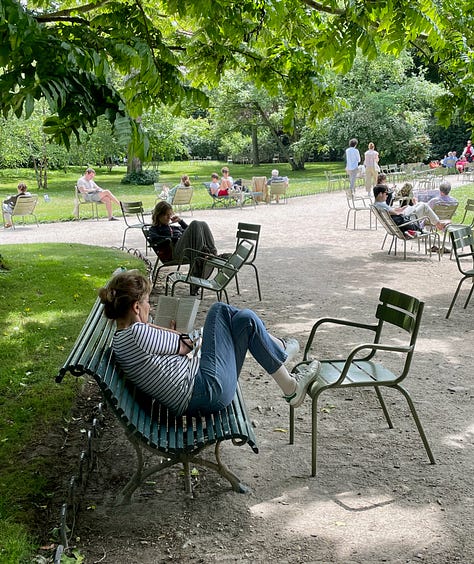
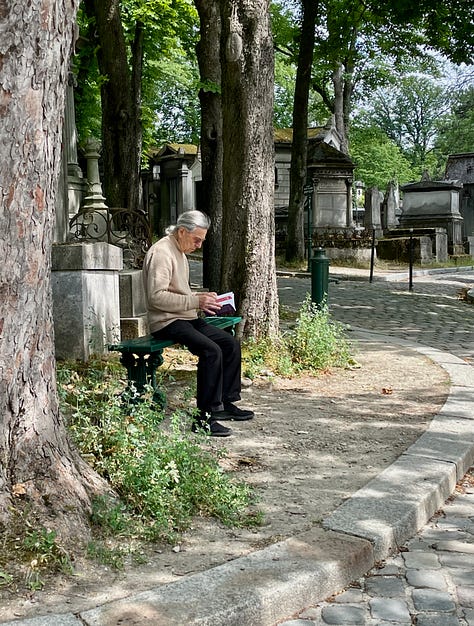
English features invading French
As a linguist, I am always interested in what is happening with the language. What caught my eye on this visit were two ways in which the French seem to be pulling features of English into French.
In the department store Galeries Lafayette, “La Sneakers Galerie” is a truly weird name for anything, as it places the modifying nominal sneakers before the noun, rather than after it, as would be normal and grammatical in French. In fact, it should be la galerie des sneakers, assuming you really want to use the English term for these shoes. If you don’t know any Romance languages well enough to understand how strange this is, imagine a department store in the US with a section called “The Department New”.
The other pictures here show some creative/unfortunate uses of the English apostrophe, which is used very differently from the French apostrophe (which appears in cases like c’etait une fois). The store name Adam’s Cuir made me laugh: Cuir means “leather”, but when read out loud, the name sounds like “Adam’s queer”—note how the apostrophe shifts in function from possessive to contraction. Not sure whether that was what they were going for.
A subtly strange example is the so-called tapas’ bar, carefully written that way in both signs. I think I understand the thinking behind this error: An expression such as bar de quartier would become “neighborhood bar” in English. So bar de tapas becomes “tapas bar”. The problem is the mistaken assumption that the –s is possessive rather than just plural. Oh well. Not too bad, really.
I am not sure I can say the same for Urban Chicken’s, where not only is a completely unnecessary apostrophe used, but they actually go to great graphic lengths to turn the apostrophe into a chicken drumstick! Then there is the fact that there’s no need in the first place to pluralize “chicken” here. Sigh.
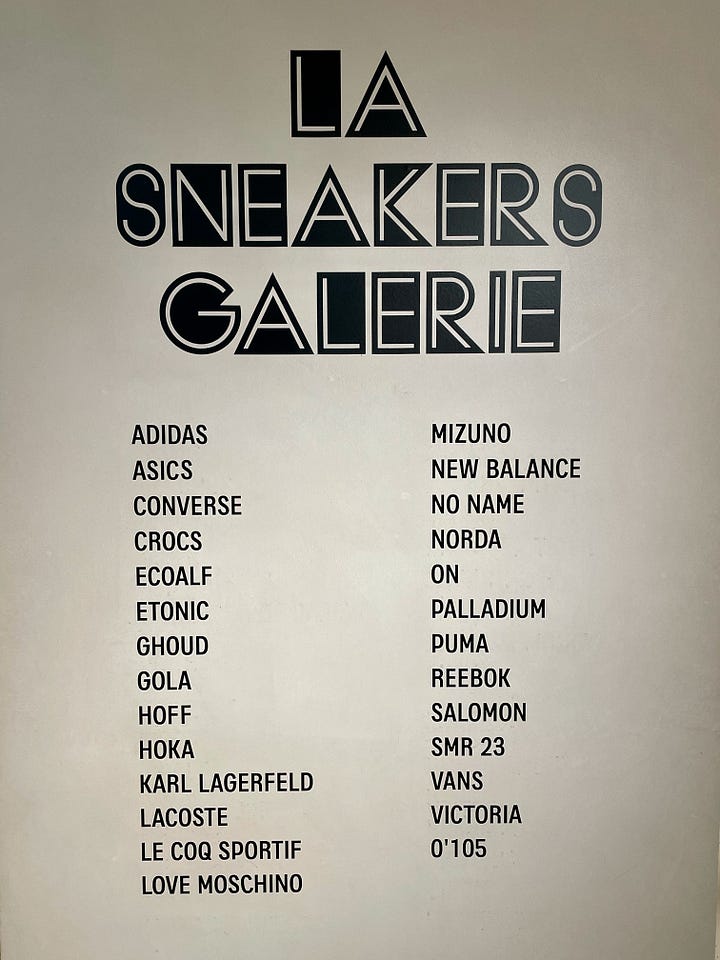
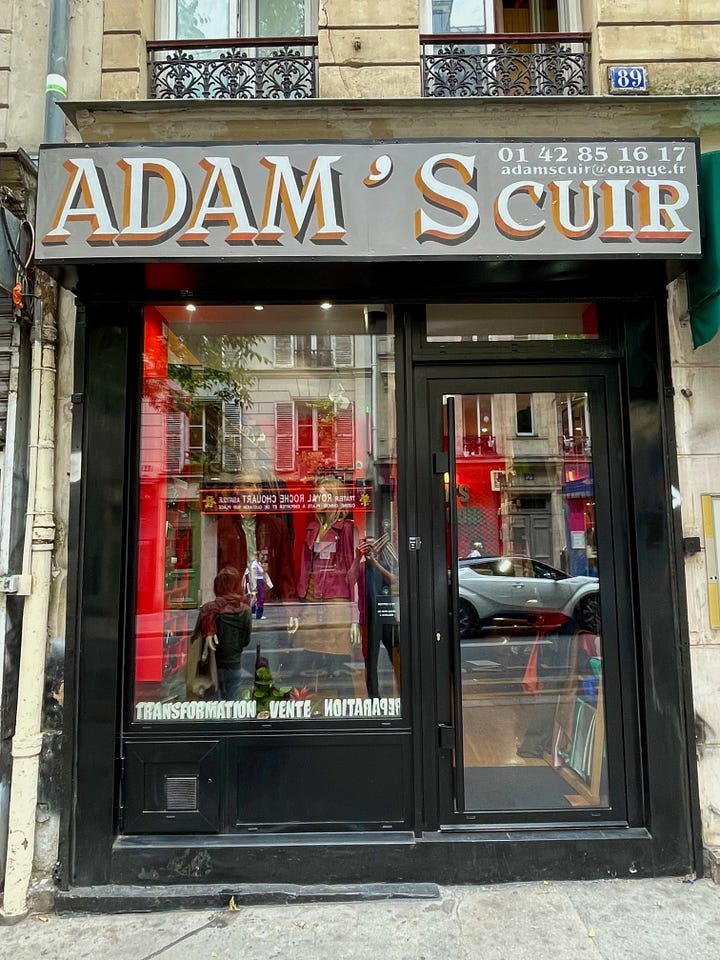

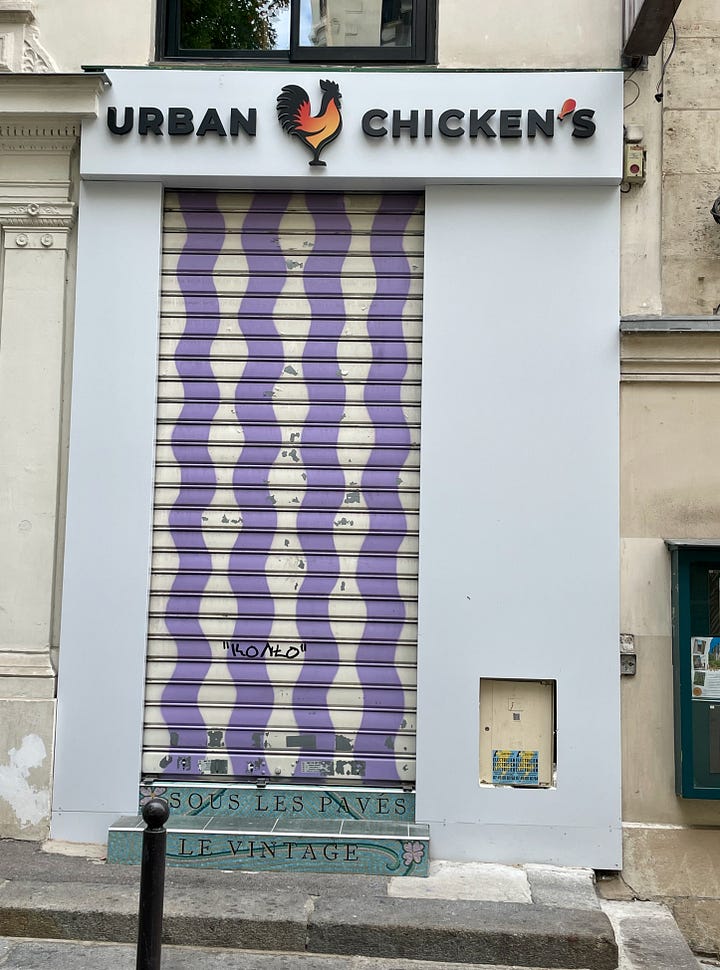
Junk on the sidewalks
Enough about apostrophes. Let’s talk about cupboards. One thing that really struck me on this visit to Paris was the incredible amount of trash on the sidewalks. In some cases, this is just the result of anti-social behavior (I also saw two guys in one evening taking a piss between two parked cars—not the same cars, and not the same piss.)
But in some cases, this is actually further evidence of a city that cares well for its citizens. Apparently, in addition to regular daily trash removal, the city allows people to schedule the collection of bulky items like furniture—and this service is free!1 I love that the city does this. I just don’t love the way that the sidewalks look as a result.
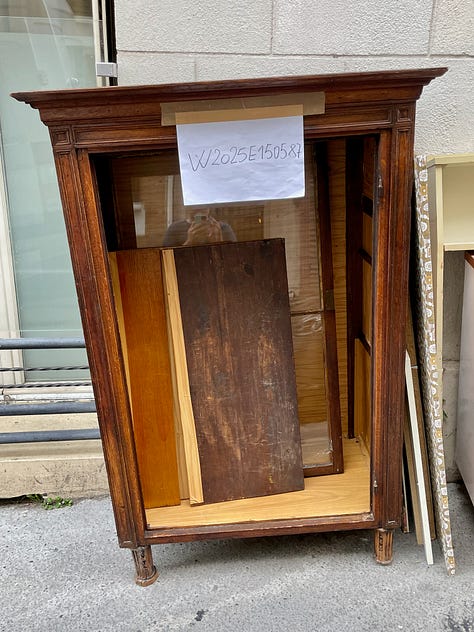
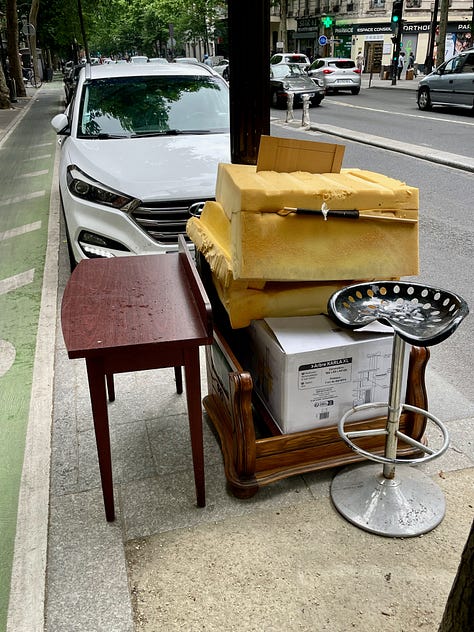

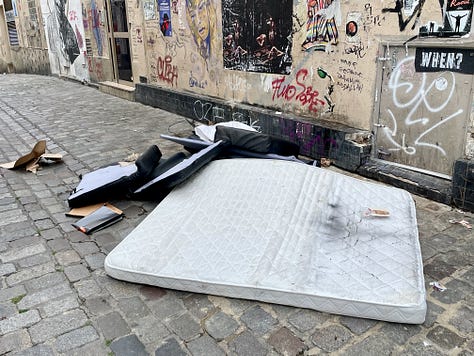

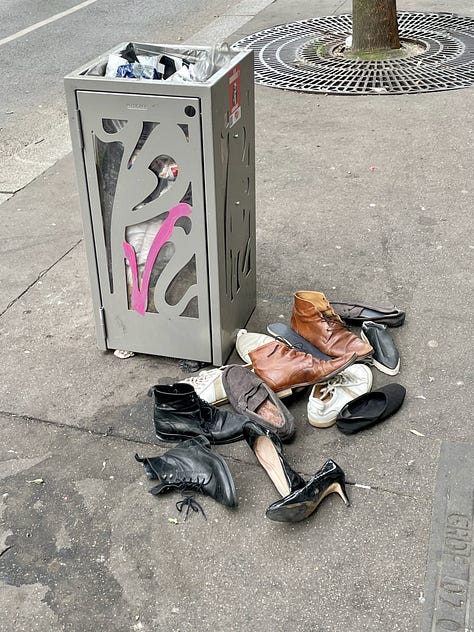
The playfulness of paste-ups
A few years ago, my girlfriend T signed us up for a graffiti tour of Paris. It was mostly in Belleville, and it was very cool. That was when I first learned about paste-up, which is a technique of, rather than painting on a wall, preparing a piece of art in advance, and then quickly pasting it to the wall of a building. Paste-ups seem to be gaining in popularity in Paris, and I really found myself enjoying both their variety and their humor. There are even ones that include soda cans or wine bottles.
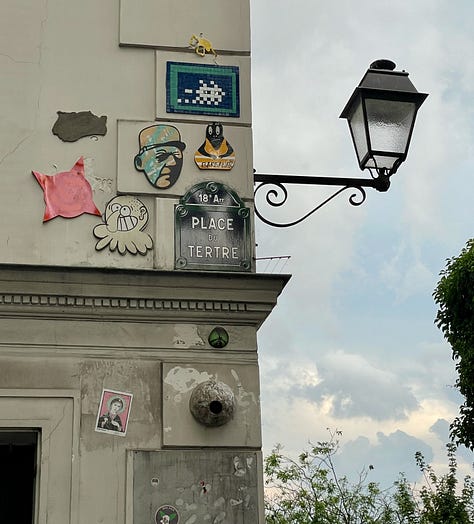
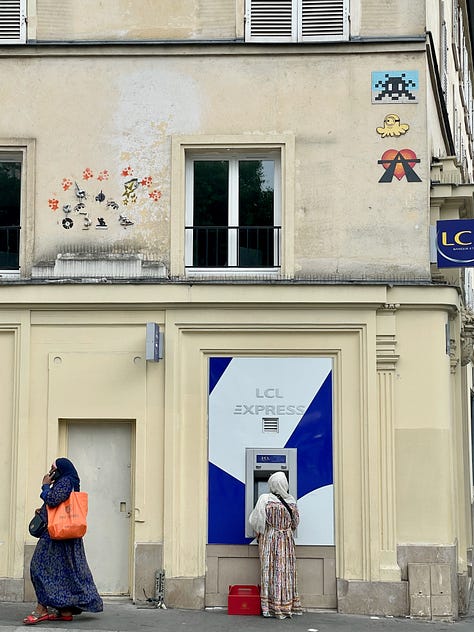


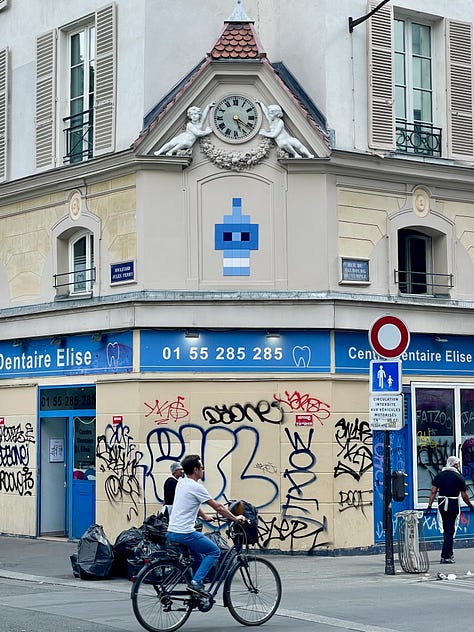

Hyper-specialized commercial zones
Throughout the ages, it has been common for certain neighborhoods to become known for trading in one particular kind of merchandise—think of the Garment District in New York City. While I know this, I was still mightily impressed when, walking through the 10th arrondissement near the Gare du Nord, I encountered an area where virtually every single shop was dedicated to formal wear, especially bridal clothes. This seems to be the area where you can get such clothing most economically. As someone who pretty much never wears suits (and seldom weds), I found it all a bit overwhelming—especially the mini-suits for children.

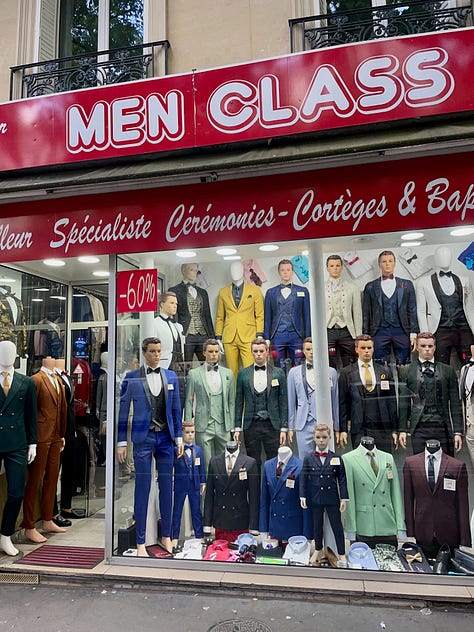

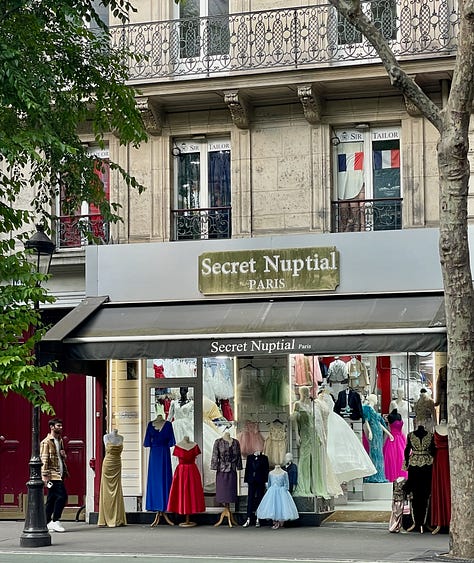
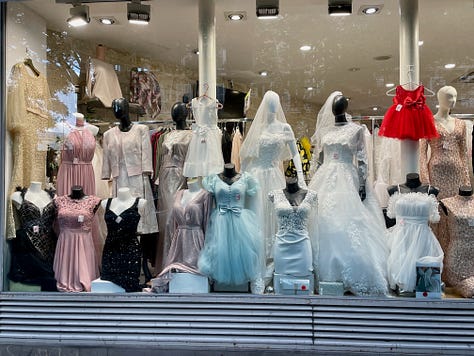

Racial divisions between neighborhoods
Not too far away from that area, which I think of as “Little Wedly”, is the 18th arrondissement, where I was staying on this visit. This is an interesting part of town because of the sharp contrast that it presents in terms of socio-economic status and race.
It seems that one could practically draw a line on a map of Paris (around the Boulevard Barbès) between where the white people live and work and where the black people live and work. As someone who generally thinks of France as reasonably racially integrated, this surprised me.2 To be fair, the customers may not actually live there, but there is clearly an area in which virtually every single business targets a clientele from Africa or the Caribbean.
In this neighborhood, there are dozens of restaurants offering cuisine from former French colonies, and dozens of shops selling gorgeous textiles and wonderful fruits and vegetables. There are also dozens of places specializing in hair styling and extensions. One thing that really bothers me is that the shops selling boubous and other traditional clothing are forced to use white-skinned manikins. This seems totally unfair to me.
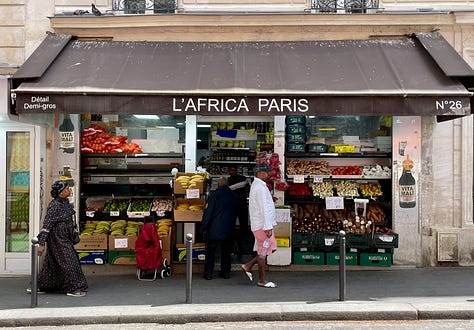
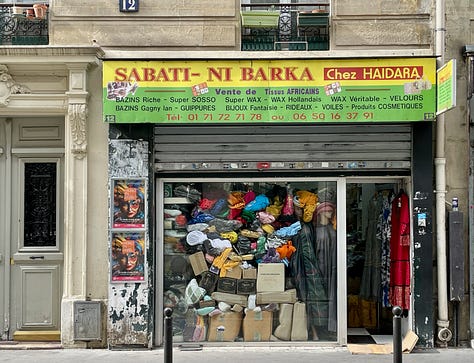
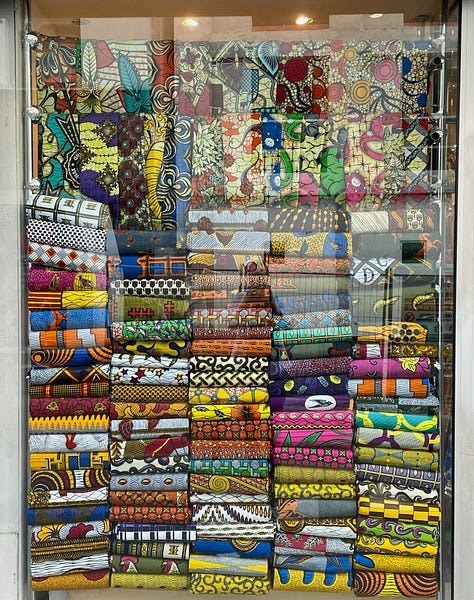
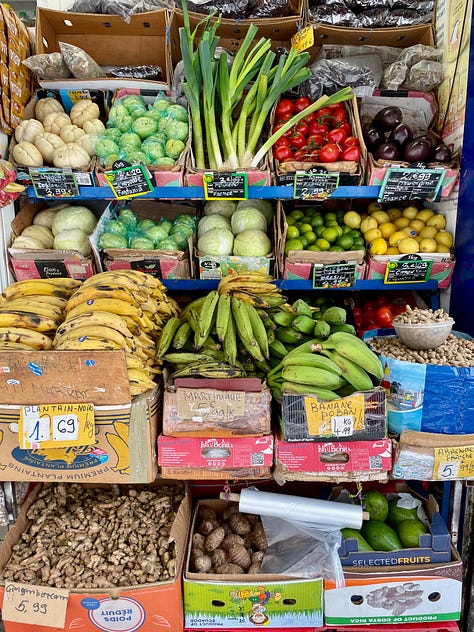
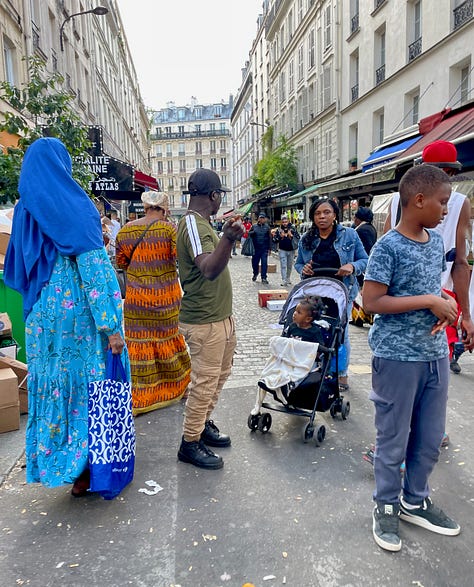
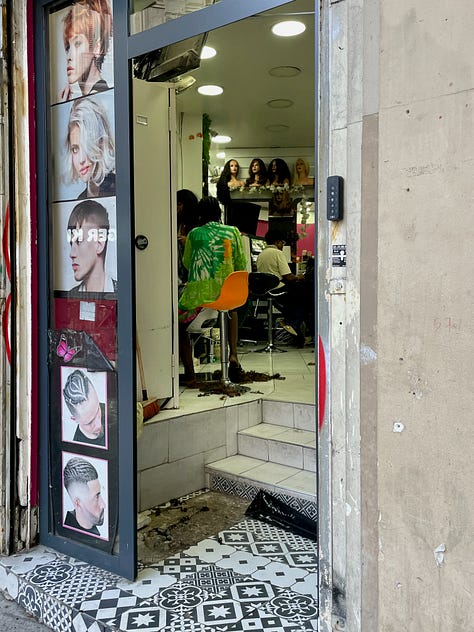

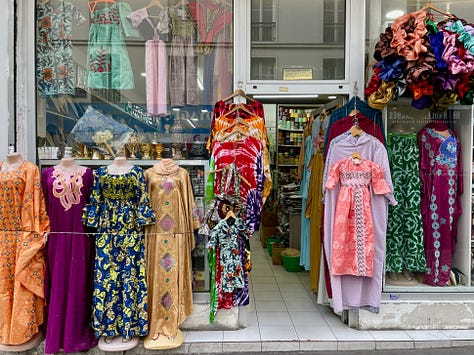
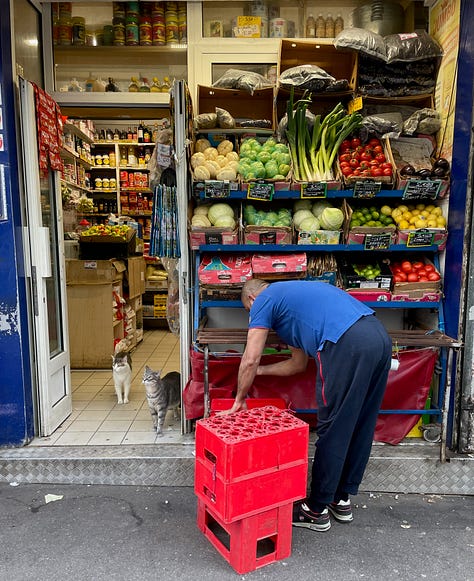
Memorials to victims of fascism
Something that I had already known about but that drew my attention at this particular point in history3 is the plaques on schools in Paris that memorialize the Jewish children abducted and killed by the Nazis during the Second World War (with the collaboration of the French government). It is chilling that children have to see these plaques when they go to school, but I appreciate the fact that French society is committed to preventing similar atrocities from occurring in the future. As they say, eternal vigilance is the price of liberty.
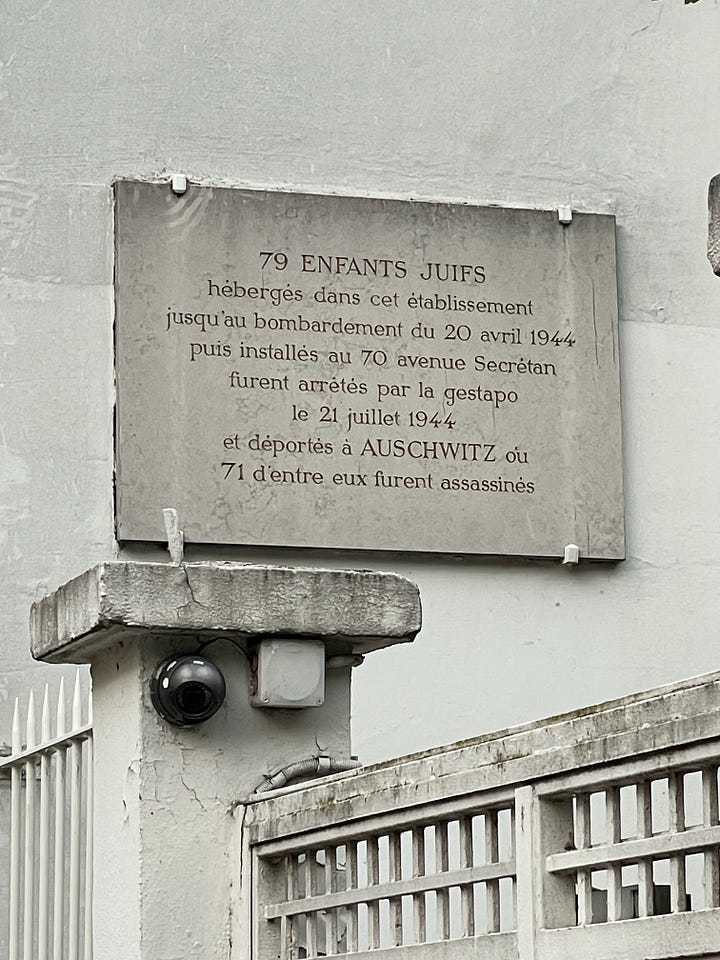
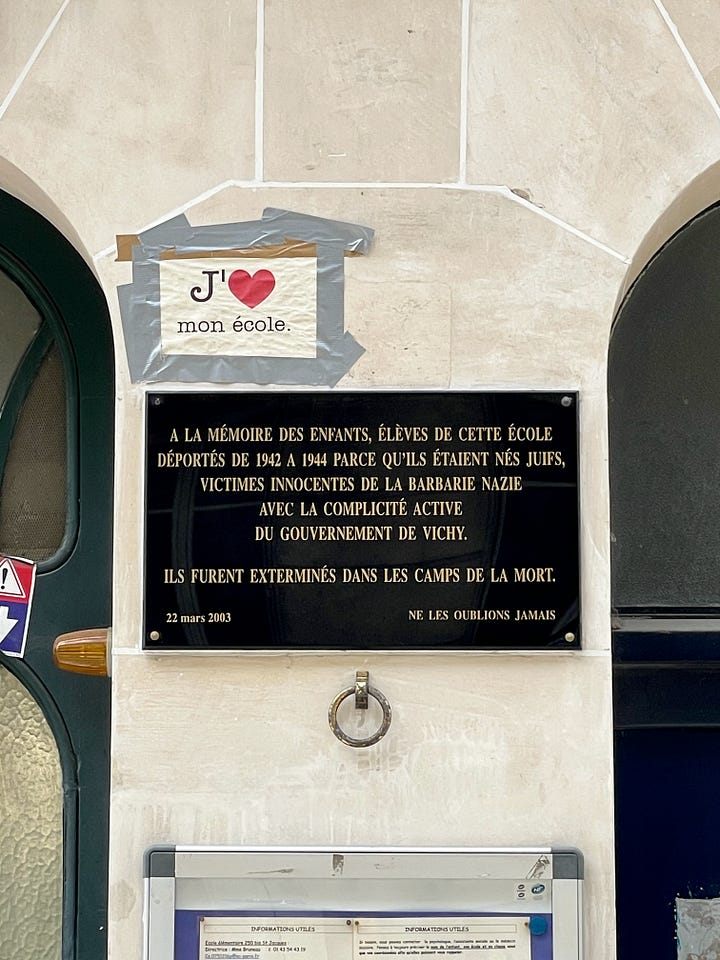
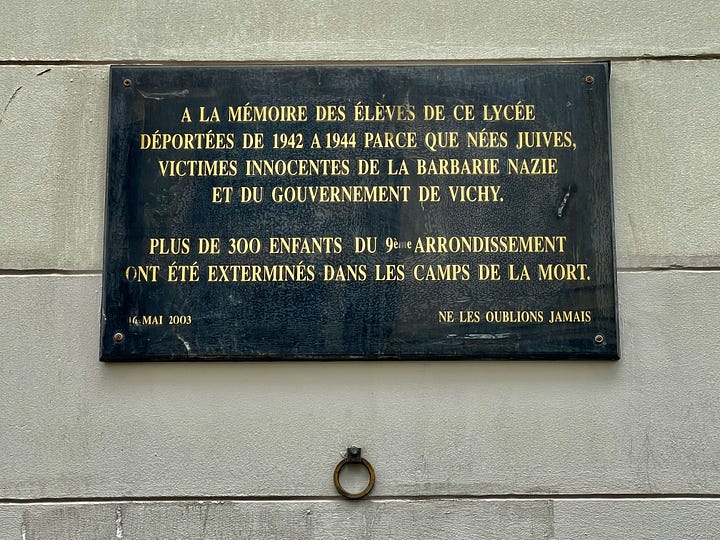

Paris winning the Champions League title
To end on a lighter note, I am honestly not a lover of football (what back home, we call either “soccer” or “watching paint dry”), but I happened to be in Paris on the day that Paris Saint Germain defeated Inter Milan in the Champions League final—the first French triumph ever, apparently. The excitement throughout the city was almost cataclysmic. I wasn’t watching the match, but I knew every time that PSG scored a goal, because I heard thousands of people in every direction scream with joy. PSG eventually defeated Inter 5–0, which is a pretty remarkable result in a sport that often leads to zero goals scored by either team after ninety minutes of play.
I tend to suspect that during this tournament, the temporary employment company Just Inter didn’t do so well.
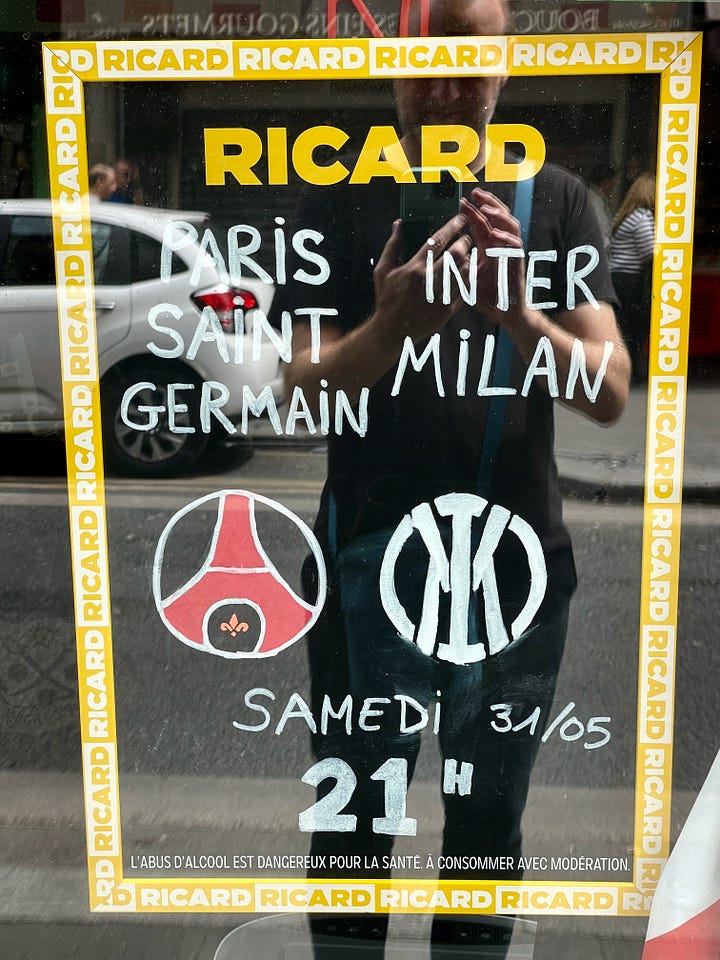
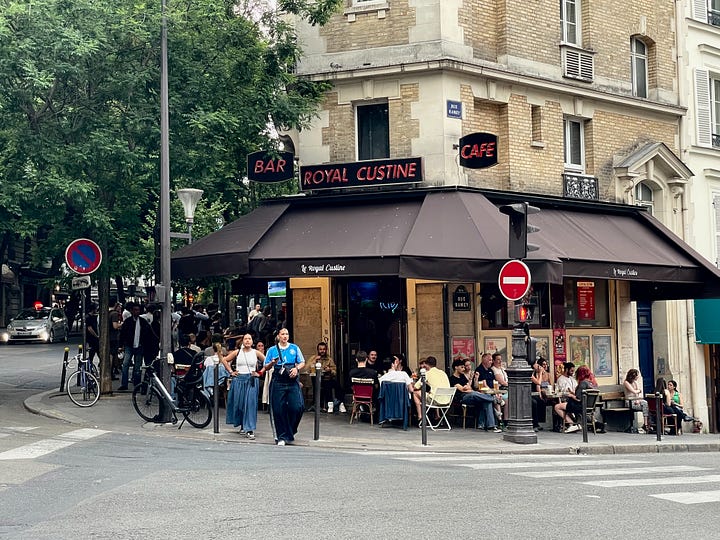
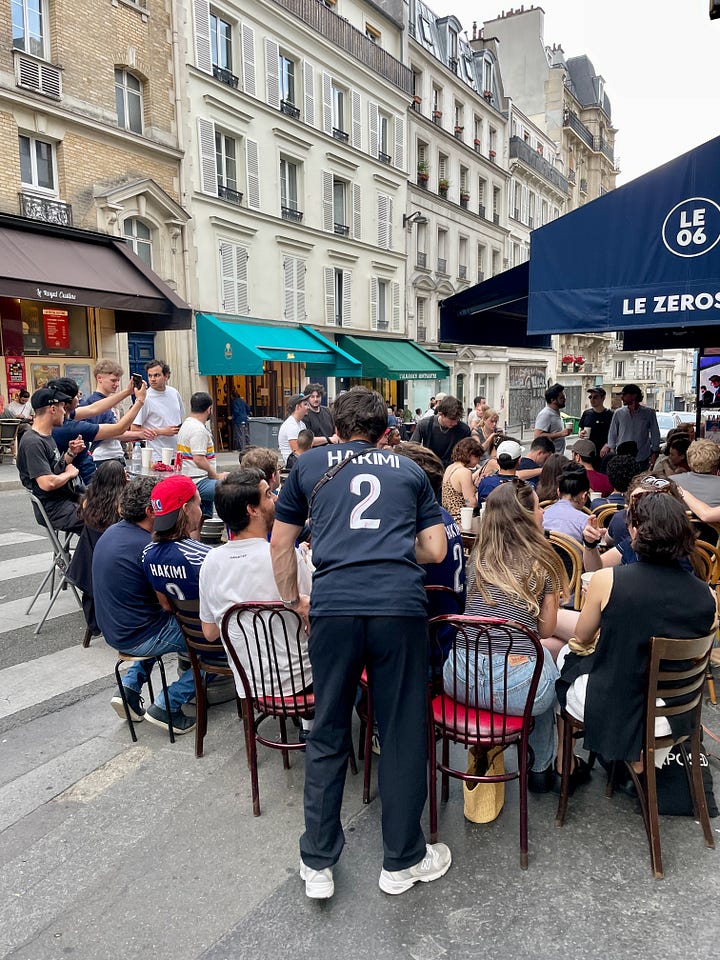
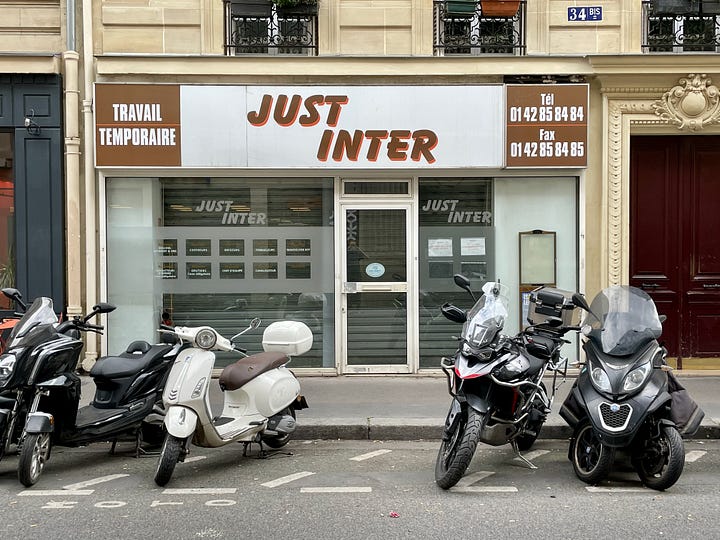
Well, mes amis, that brings us to the end of this photo essay and my list of notable things about this most notable of cities. I hope you’ve enjoyed it. In what ways has Paris managed to surprise you?
If you would like to read some other essays about travel, languages, and foreign cities, allow me to suggest these:
You may think me simply naive, and that’s fair. I do know all about the banlieues, but I was surprised to see this happening inside the 20 arrondissements of the city center.
Also while I was in Paris, the US Supreme Court moved to allow the Trump administration to remove protections from half a million refugees originating from the most dangerous and dysfunctional countries in the world. These people are now at risk of being deported and sent back into harm’s way.








Ah, I miss Paris so much! I loved getting this vicarious eclectic "tour", thank you! Do the shopkeepers actually legally have to use caucasian manequins?? Or do you think these are just the most widely available, or...?
"avec la complicité active du gouvernement de Vichy".
It's OK to own this. That's what grown-up governments do.